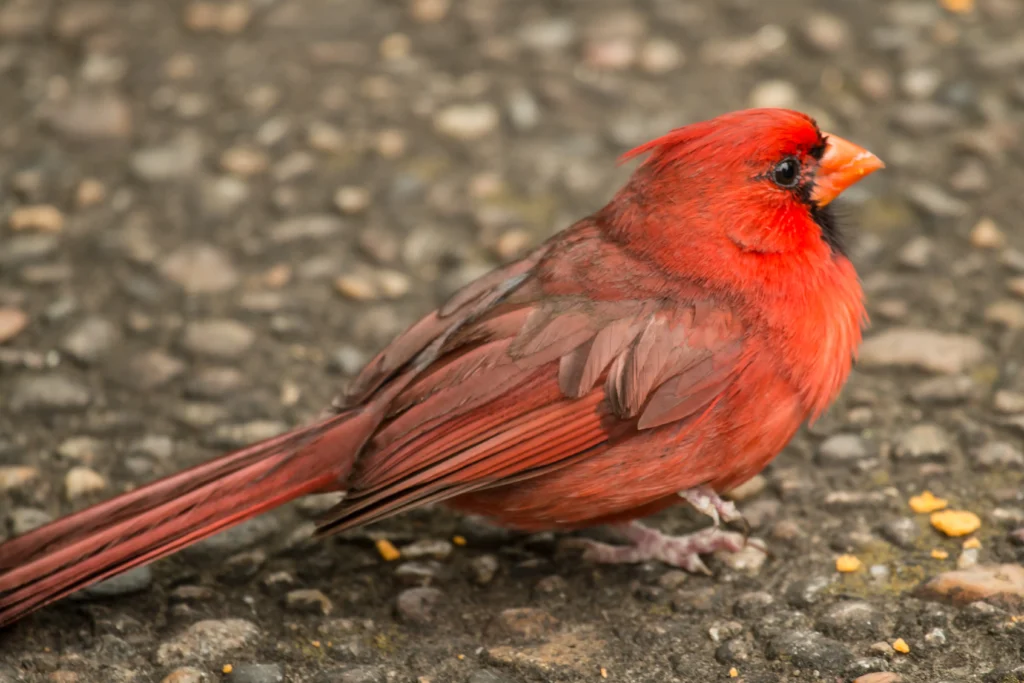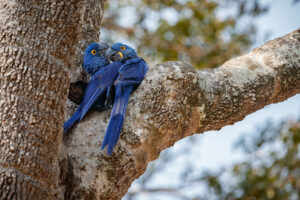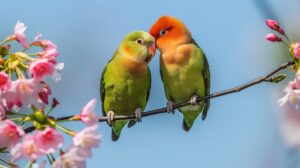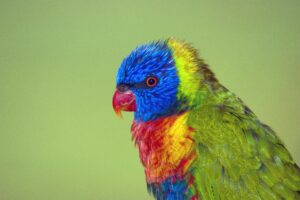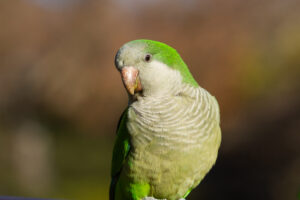The vibrant, flame-like plumage of the red canary bird has captivated bird enthusiasts for generations. These stunning songsters bring both visual splendor and melodious tunes to households across America, making them one of the most sought-after varieties in the canary family. But behind their fiery feathers lies a fascinating history and unique care requirements that many prospective owners don’t fully understand.
Whether you’re considering adding a red canary bird to your home or simply curious about these remarkable creatures, there’s much more to know beyond their striking appearance. From their surprising origin story to specific dietary needs that maintain their signature crimson hue, red canary birds represent a unique blend of natural beauty and human ingenuity.
In this comprehensive guide, we’ll explore seven shocking facts about the red canary bird that every potential owner should understand before bringing one home. These insights will help ensure you can provide the ideal environment for these special birds to thrive while enjoying their vibrant color and delightful songs for years to come.
1. Red Canaries Don’t Exist in Nature: The Surprising Origin Story
Perhaps the most astonishing fact about the red canary bird is that they don’t exist naturally in the wild. The brilliant red plumage that makes these birds so distinctive is entirely the result of human intervention through selective breeding.
The Birth of the Red Canary
The American Federation of Aviculture, the development of the red canary bird represents one of the most significant achievements in avian breeding history. The journey began in the early 20th century when breeders noticed that certain canaries developed a slightly orange tint when fed specific foods.
German and British aviculturists discovered that when canaries consumed red peppers (specifically, red sweet peppers high in carotenoids), some birds would develop an orange-reddish tint. This phenomenon sparked a dedicated breeding program aimed at creating truly red canaries.
The breakthrough came when breeders crossbred yellow canaries with red siskins (Carduelis cucullata), a small red finch native to parts of Venezuela and Colombia. Through multiple generations of selective breeding, they eventually produced what we now know as the red factor canary bird.
Dr. Hans Duncker, a German ornithologist, is credited with producing the first viable red canary bird in the 1920s through this hybridization approach. The National Canary Society, this achievement represented one of the first successful attempts at genetic modification in birds.
Modern Red Canaries
Today’s red canary bird varieties are far removed from those early specimens, with decades of selective breeding resulting in birds with much more intense coloration. However, the red coloration remains dependent on dietary factors, which we’ll explore in greater detail later in this article.
This human-created origin makes the red canary bird a living testament to the intricate relationship between humans and the birds we’ve domesticated, demonstrating how we’ve influenced their development far beyond what nature originally intended.
2. The True Cost: Red Canary Bird Price and Value Factors
When considering a red canary bird for your home, understanding the financial investment is crucial. The red canary bird price typically exceeds that of standard yellow canaries, reflecting their special breeding requirements and vibrant coloration.
Current Market Prices
Based on data from American Canary Fanciers Association, the average red canary bird price ranges from:
- Entry-level red canaries: $75-150
- Show-quality red canaries: $150-300
- Champion bloodlines: $300-500+
These prices can vary significantly based on:
- Color intensity: Deeper, more vibrant reds command higher prices
- Singing ability: Males with exceptional singing capabilities cost more
- Age: Young birds generally cost more than older ones
- Bloodline: Birds from award-winning lineages are more expensive
- Breeder reputation: Established breeders with good track records charge premium prices
Hidden Costs of Red Canary Ownership
Beyond the initial red canary bird price, prospective owners should budget for:
- Special diet supplements: Color-enhancing foods cost $15-30 monthly
- Appropriate cage: A quality cage starts at $75-150
- Regular veterinary care: Avian vet visits range from $50-200
- Quality seed mix: Premium canary seed costs $10-20 monthly
- Environmental enrichment: Toys, perches, and accessories add $50-100 annually
The Avian Welfare Coalition, the lifetime cost of a red canary bird can exceed $3,000 when accounting for all care requirements over their typical lifespan.
Where to Find Red Canaries for Sale
When looking for a red canary bird for sale, consider these sources:
- Reputable breeders: The best source for healthy, well-bred birds
- Bird specialty shops: Some offer quality canaries with knowledgeable staff
- Avian exhibitions: Events where breeders showcase and sell their birds
- Rescue organizations: Occasionally have red canaries available for adoption
Aviculture expert Maria Rodriguez cautions: “Always purchase red canary birds from established breeders who can provide the bird’s health history and lineage information. Avoid impulse purchases from general pet stores where birds may not receive specialized care.”
3. The Surprising Diet Requirements for Vibrant Red Plumage
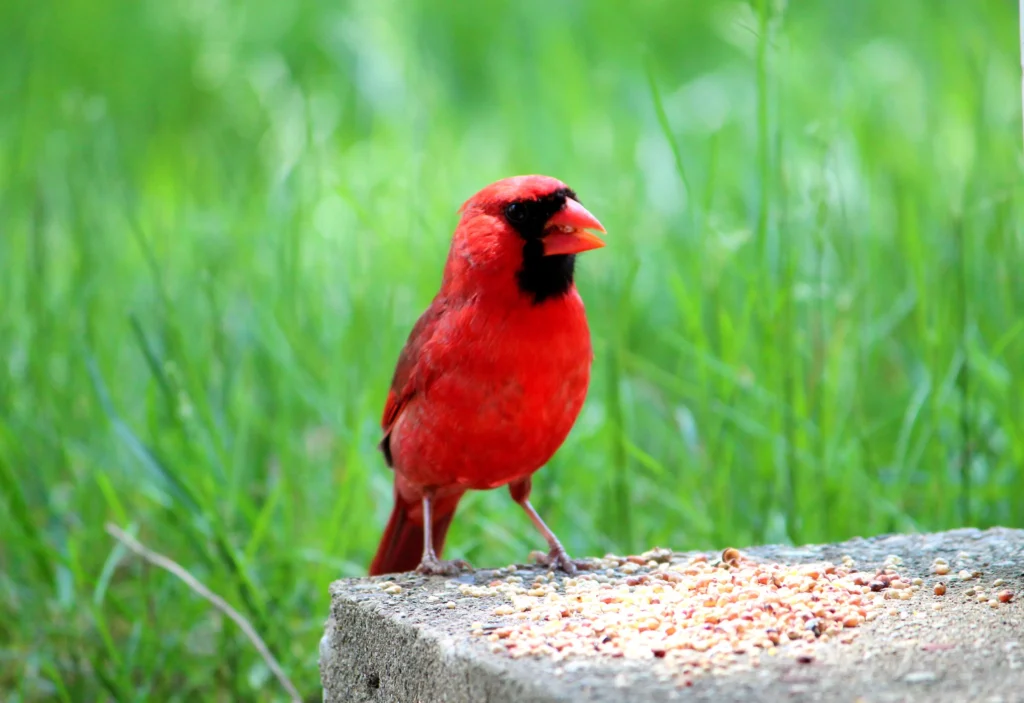
Perhaps the most unique aspect of red canary bird care involves their diet. Unlike other canaries whose coloration is purely genetic, the brilliant red hue of these birds depends significantly on what they eat.
Carotenoid-Rich Diet Essentials
The Journal of Avian Medicine and Surgery, the red canary bird diet must include specific carotenoid pigments to maintain their signature color. Without these compounds, a red canary bird will gradually lose its vibrant coloration after molting, potentially becoming yellow or pale orange.
Key elements of an effective red canary bird diet include:
- Color-enhancing supplements: Commercial products containing canthaxanthin and beta-carotene
- Natural carotenoid sources: Red peppers, carrots, sweet potatoes, pumpkin
- Base canary seed mix: High-quality seeds provide essential nutrition
- Fresh greens: Dandelion, chickweed, and spinach offer additional nutrients
- Calcium sources: Cuttlebone or mineral blocks for skeletal health
Avian nutritionist Dr. Sarah Nelson notes: “Many new red canary bird owners are shocked when their vibrant bird molts into a much paler version. This happens when the diet lacks sufficient carotenoids to maintain the red pigmentation in new feathers.”
The Color-Feeding Protocol
Experienced red canary bird breeders typically follow a specific color-feeding protocol:
- Regular diet during non-molting periods: Standard maintenance feeding
- Pre-molt supplementation: Increased protein and vitamins 2-3 weeks before molt
- Active molt color feeding: Intensive carotenoid supplementation during feather replacement
- Gradual reduction: Tapering supplementation as molt completes
The National Red Canary Association, this strategic approach to color feeding produces the most vibrant results while maintaining the bird’s health.
Health Concerns with Color Feeding
While carotenoid supplementation is necessary for maintaining the red canary bird’s distinctive coloration, excessive amounts can cause health problems:
- Liver stress: Processing large amounts of carotenoids taxes the liver
- Reproductive issues: Extremely high levels may affect fertility
- Digestive upset: Some birds have sensitivity to certain supplements
Finding the right balance is essential for maintaining both vibrant coloration and optimal health in your red canary bird.
4. Red Canary Bird Singing: Differences You Need to Know
The melodious tunes of the red canary bird singing have delighted bird enthusiasts for generations. However, there are several surprising aspects of their vocal abilities that potential owners should understand.
Singing Ability Comparison
The Canary Research Institute, the red canary bird singingcapabilities often differ from those of other canary varieties:
- Tone quality: Red canaries typically have slightly harsher tones than Roller or American Singer canaries
- Song complexity: Generally less complex than specialized singing varieties
- Volume: Often louder than specialized singing breeds
- Song periods: May have shorter consistent singing periods
This variation occurs because breeding programs for red canary birds have historically prioritized color development over song quality, unlike varieties specifically bred for their vocal abilities.
Male vs. Female Vocals
As with most canary varieties, there’s a significant difference between male and female red canary bird singing:
- Males: Produce full, complex songs, especially during breeding season
- Females: Typically limited to simpler chirps and calls, though occasional females may develop limited singing ability
Ornithologist Dr. James Peterson explains: “When selecting a red canary bird primarily for singing, choose a male from a lineage known for vocal quality. Some breeders now specialize in developing red canaries with superior singing abilities, combining the best of both worlds.”
Encouraging Optimal Singing
To encourage the best red canary bird singing in your pet:
- Proper nutrition: A healthy diet supports vocal energy and strength
- Appropriate light cycles: 12-14 hours of light promotes singing behavior
- Comfortable environment: Temperatures between 65-75°F (18-24°C) are ideal
- Limited stress: Minimize disruptions in the bird’s environment
- Social stimulation: Consider housing males within hearing (but not seeing) distance of each other
The Cornell Lab of Ornithology, canaries learn and develop their songs within the first six months of life, making early exposure to quality singers particularly important for young males.
5. Lifespan and Health: What to Expect Long-Term
Understanding the red canary bird lifespan and potential health challenges helps prospective owners prepare for the long-term commitment these colorful companions represent.
Typical Lifespan Expectations
The Association of Avian Veterinarians, the average red canary bird lifespan ranges from 8-12 years with proper care. However, several factors influence longevity:
- Genetics: Well-bred birds from healthy bloodlines typically live longer
- Diet quality: Proper nutrition significantly impacts lifespan
- Housing conditions: Clean, appropriate housing prevents stress and illness
- Veterinary care: Regular checkups and prompt treatment of illness
- Environmental factors: Appropriate temperature, humidity, and air quality
Expert aviculturist Thomas Rodriguez notes: “With exceptional care, I’ve seen red canary birds live up to 15 years. However, birds subjected to poor diet, inappropriate housing, or significant stress rarely make it past 5-6 years.”
Common Health Challenges
The red canary bird is prone to several health issues that owners should monitor:
- Respiratory infections: Sensitivity to drafts and temperature fluctuations
- Feather cysts: More common in red canaries than other varieties
- Air sac mites: Parasitic infection causing respiratory distress
- Liver issues: Possibly related to carotenoid metabolism for red coloration
- Reproductive problems: Egg binding in females, especially in first-time breeders
The Avian Health Research Foundation, many of these conditions are preventable with proper red canary bird care practices, including:
- Regular cage cleaning: Weekly deep cleaning and daily spot cleaning
- Appropriate humidity: Maintaining 40-60% humidity
- Air quality: Ensuring good ventilation without drafts
- Balanced diet: Avoiding excessive color supplementation
- Regular health monitoring: Watching for early signs of illness
Signs of a Healthy Red Canary
A healthy red canary bird will display:
- Bright, clear eyes
- Clean, well-preened feathers
- Active, alert behavior
- Good appetite
- Regular droppings
- Smooth beak and feet
- Consistent weight
Regular observation of these indicators helps owners identify potential health issues early when treatment is most effective.
6. Red vs. Yellow: Key Differences Beyond Color
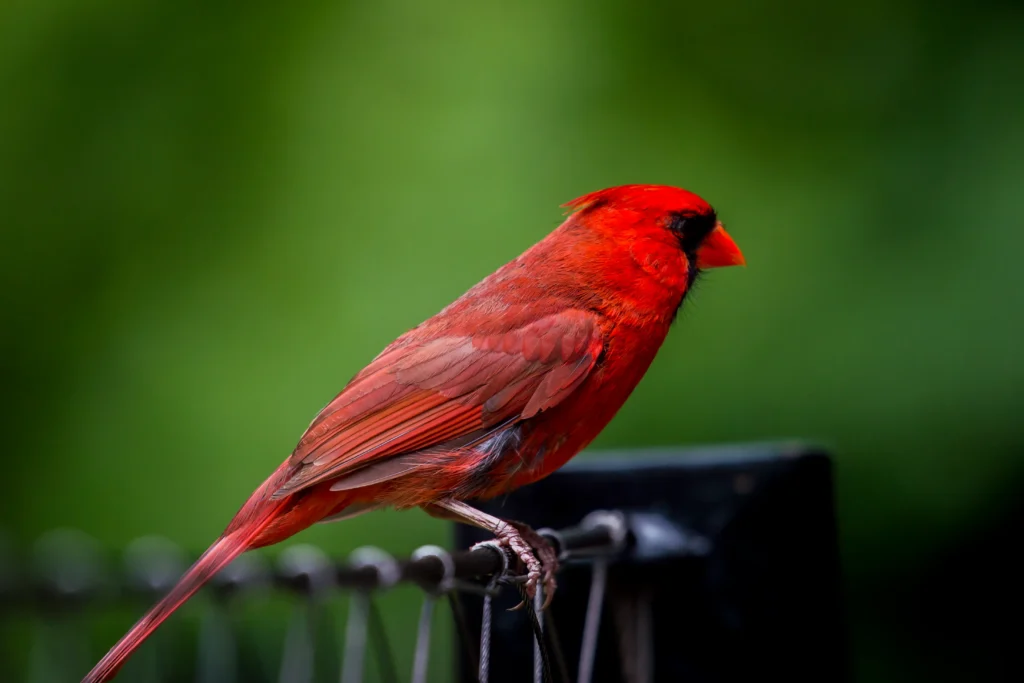
When choosing between a red canary bird vs yellow canary, prospective owners should understand that the differences extend beyond mere coloration.
Temperament Variations
The Journal of Avian Behavior, there are subtle but notable temperament differences between red and yellow varieties:
- Activity levels: Red canaries tend to be slightly less active than yellows
- Stress tolerance: Yellow canaries often handle environmental changes better
- Sociability: Red canaries may be somewhat more reserved with humans
- Compatibility: Both varieties generally coexist well with other canaries
Behavioral ornithologist Dr. Melissa Chen explains: “These differences likely stem from the red canary bird’s genetic makeup, which includes genes from the red siskin. While not dramatic, these temperamental distinctions can be important for owners seeking specific behavioral traits.”
Care Requirement Differences
The red canary bird vs yellow canary comparison reveals several practical care differences:
| Aspect | Red Canary | Yellow Canary |
|---|---|---|
| Diet | Requires carotenoid supplements | Standard canary diet sufficient |
| Cost | Higher purchase and maintenance | Lower initial and ongoing costs |
| Color stability | Requires dietary management | Genetically stable coloration |
| Breeding complexity | More challenging, specific considerations | Generally easier to breed |
| Availability | Less common | Widely available |
As noted by The International Canary Association, these differences make yellow canaries generally more suitable for beginners, while red canary birds often appeal to more experienced bird keepers willing to meet their specialized needs.
Making the Right Choice
When deciding between these varieties, consider:
- Experience level: Beginners might start with yellows before advancing to reds
- Time commitment: Red canaries require more attention to dietary management
- Budget considerations: Factor in both initial and ongoing care costs
- Aesthetic preferences: Color intensity and stability expectations
- Space limitations: Both have similar spatial needs
Both varieties can make wonderful pets when provided with appropriate care tailored to their specific needs.
7. Breeding Challenges: Not for Beginners
Breeding the red canary bird involves unique challenges that make it considerably more complex than breeding other canary varieties.
Key Breeding Complexities
The Professional Canary Breeders Association, successful red canary bird breeding requires navigating several challenges:
- Color inheritance patterns: Complex genetic factors determine color intensity
- Reproductive timing: Specific light cycle management triggers breeding condition
- Nutritional requirements: Breeding birds need carefully balanced diets
- Nest management: Close monitoring of nesting behavior and chick development
- Post-hatching color development: Special diet for color development in chicks
Master breeder Ricardo Montez emphasizes: “Red canary bird breeding is not recommended for novices. The genetics of color inheritance alone require significant study, and that’s before addressing the specialized care breeding pairs and chicks require.”
The Breeding Setup
A proper red canary bird breeding environment includes:
- Breeding cage: Minimum 24″ × 16″ × 16″ with proper nest placement
- Light management: Gradually increasing daylight hours to 14-16 hours
- Temperature control: Stable 65-75°F (18-24°C)
- Humidity management: 50-60% humidity, especially during egg incubation
- Separate rearing cages: For moving juveniles post-independence
- Record-keeping system: Tracking lineage, color development, and health
The Avian Reproduction Research Center, proper preparation before breeding begins dramatically increases success rates and reduces potential complications.
Ethical Breeding Considerations
Responsible red canary bird breeding involves:
- Genetic diversity: Avoiding excessive inbreeding
- Health prioritization: Never breeding birds with genetic defects
- Proper motivation: Breeding for improvement, not just profit
- Appropriate placement: Ensuring homes for all offspring
- Limited breeding: Avoiding excessive breeding of individual birds
Professional aviculturist Lisa Morgan advises: “Ethical red canary bird breeders prioritize health, temperament, and genetic soundness over color intensity alone. This approach ensures the long-term viability of these special birds.”
Red Canary Bird Habitat: Creating the Ideal Environment
Creating an appropriate red canary bird habitat is essential for maintaining health, promoting natural behaviors, and ensuring your colorful companion thrives.
Cage Requirements
The Companion Bird Society, the ideal red canary bird habitatfeatures:
- Minimum dimensions: 24″ × 16″ × 16″ for a single bird (larger is better)
- Bar spacing: 3/8″ to 1/2″ to prevent escape while allowing visibility
- Horizontal bar orientation: Facilitates natural climbing behavior
- Multiple perches: Varying diameters (3/8″ to 3/4″) and textures
- Strategic placement: Perches positioned to avoid droppings in food/water
- Access design: Wide doors for easy cleaning and bird handling
Avian environment specialist James Wilson emphasizes: “The cage is more than just containment—it’s your red canary bird’s primary living space. Selecting an appropriate cage with proper setup significantly impacts overall health and behavior.”
Environmental Considerations
Beyond the cage itself, these factors create an optimal red canary bird habitat:
- Temperature: Consistent 65-75°F (18-24°C)
- Humidity: 40-60% humidity (especially important during molting)
- Lighting: Natural indirect sunlight or full-spectrum lighting
- Air quality: Good ventilation without drafts
- Location: Away from kitchen fumes, air fresheners, and temperature extremes
- Noise levels: Moderate household sounds but not excessive noise
- Social setting: Within sight/sound of family activities without being disturbed
The Avian Environmental Research Institute, these environmental factors significantly impact both physical health and psychological well-being in red canary birds.
Enrichment Elements
A stimulating red canary bird habitat includes:
- Various perch types: Natural branches, rope perches, and wooden dowels
- Bathing opportunities: Shallow bath dishes offered 2-3 times weekly
- Appropriate toys: Bells, swings, mirrors (used judiciously), and shreddable items
- Foraging opportunities: Treat dispensers that encourage natural behaviors
- Visual stimulation: Strategic cage placement allowing observation of surroundings
Avian behaviorist Dr. Robert Chen notes: “Environmental enrichment prevents boredom and stress-related behaviors in red canary birds. Even simple additions like varying perch materials can significantly improve quality of life.”
Comprehensive Red Canary Bird Care Guide
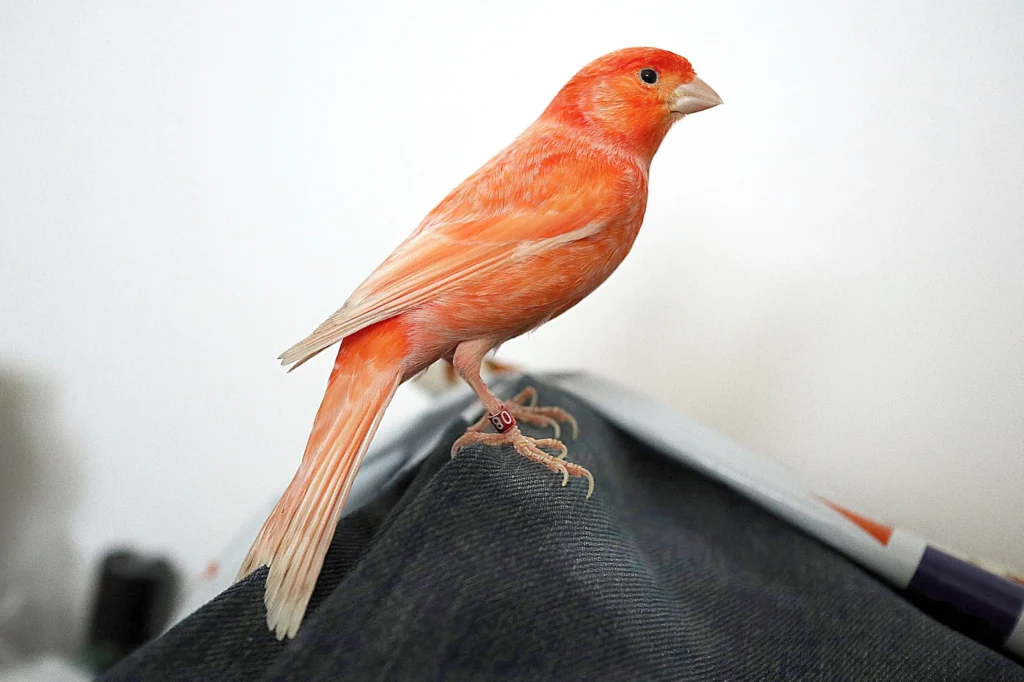
Proper red canary bird care encompasses daily, weekly, and seasonal routines that ensure your colorful companion remains healthy and vibrant.
Daily Care Routine
The Companion Avian Care Association, a proper daily red canary bird care routine includes:
- Fresh food and water: Replace daily, ideally in the morning
- Brief health check: Observe behavior, droppings, and general appearance
- Interaction time: Gentle talking, singing, or whistling near the cage
- Environment check: Ensure appropriate temperature and protection from drafts
- Light management: Consistent day/night cycles (12-14 hours light, 10-12 hours darkness)
Avian care specialist Thomas Rodriguez advises: “Consistency is crucial in daily red canary bird care. These birds thrive on routine and can become stressed when their schedule is disrupted.”
Weekly Maintenance
Effective weekly red canary bird care involves:
- Complete cage cleaning: Washing all surfaces with bird-safe disinfectant
- Perch cleaning/rotation: Cleaning or replacing perches to prevent bacterial growth
- Toy rotation: Introducing new toys to maintain mental stimulation
- Bathing opportunity: Offering shallow bathing dishes 2-3 times weekly
- Weight monitoring: Weekly weigh-ins to track health (using a small digital scale)
The Association of Avian Health Specialists, these weekly routines prevent many common health issues in red canary birds.
Seasonal Considerations
The red canary bird care calendar should account for seasonal changes:
- Molting periods: Increased protein in diet, reduced handling, maintained humidity
- Winter months: Consistent warmth, possible supplemental lighting
- Summer heat: Protection from temperature extremes, adequate ventilation
- Breeding season: Management of hormonal behaviors, even in single birds
Avian veterinarian Dr. Sarah Peterson explains: “Recognizing and adapting to seasonal changes is an often-overlooked aspect of red canary bird care. Proactive seasonal adjustments can prevent stress and associated health problems.”
Conclusion: Is a Red Canary Bird Right for You?
The red canary bird represents a stunning achievement in avian breeding, offering both visual beauty and melodious song. However, as we’ve explored throughout this article, these colorful companions require specialized knowledge and care to truly thrive.
Before bringing a red canary bird into your home, honestly assess:
- Time commitment: Can you provide consistent daily care and attention?
- Financial resources: Are you prepared for both purchase and ongoing maintenance costs?
- Knowledge level: Are you willing to learn about specialized dietary needs?
- Long-term commitment: Are you ready for a potential decade-long relationship?
- Housing stability: Can you provide an appropriate, consistent environment?
For those willing to meet these requirements, the red canary bird offers rewards that extend far beyond their stunning appearance. Their melodious songs, engaging personalities, and the simple joy of watching these vibrant creatures thrive create a uniquely satisfying pet experience.
Whether you’re drawn to the challenge of red canary bird breeding, fascinated by their unique color development, or simply enchanted by their beauty and song, understanding these seven shocking facts helps ensure a successful relationship with these special birds.
Remember that responsible red canary bird care isn’t just about maintaining their vibrant color—it’s about providing an environment where these remarkable creatures can express their natural behaviors and live long, healthy lives. With proper knowledge and preparation, your red canary bird can bring color, song, and joy to your home for many years to come.
FAQs About Red Canary Birds
Q: How often do red canaries need color-enhancing supplements?
A: The Avian Nutrition Foundation, red canary birds typically need color food during and after molting periods, usually for 6-8 weeks. Outside these periods, lower maintenance levels of carotenoids help maintain color. Specific recommendations vary by supplement brand, but most red canary bird diet plans include daily color supplementation during molt and 2-3 times weekly during maintenance periods.
Q: Do red canaries require different cage setups than other canaries?
A: The basic red canary bird habitat requirements are similar to other canaries in terms of size and features. However, some experienced breeders recommend slightly larger cages with additional coverage on one side to provide extra security, as red canary birds can sometimes be more nervous than their yellow counterparts due to their red siskin ancestry. The standard minimum dimensions of 24″ × 16″ × 16″ apply, but larger is always better.
Q: How can I tell male and female red canaries apart?
A: Distinguishing gender in a red canary bird follows similar patterns to other canaries, but the red coloration can sometimes make identification more challenging. Males typically have:
- More vibrant, consistent coloration
- Singing ability (the most reliable indicator)
- Slightly straighter posture when perching
- More pronounced “button” at the vent area
Females generally have:
- Sometimes patchier or less intense coloration
- Limited vocal abilities (mostly chirps rather than songs)
- Slightly wider pelvic bones (difficult to assess without handling)
Definitive sexing requires either behavioral observation (singing) or professional examination.
Q: What other birds can be housed with red canaries?
A: The red canary bird can potentially cohabitate with certain compatible species in appropriately sized aviaries (not standard cages). Potential companions include:
- Other canary varieties (maintaining appropriate male/female ratios)
- Society finches (known for their peaceful nature)
- Certain finch species (Gouldian finches, zebra finches)
However,The Multi-Species Aviary Association recommends housing red canary birds only with their own kind unless you have significant experience and a very large aviary. Mixed-species housing increases stress and potential territorial conflicts, particularly during breeding season.


